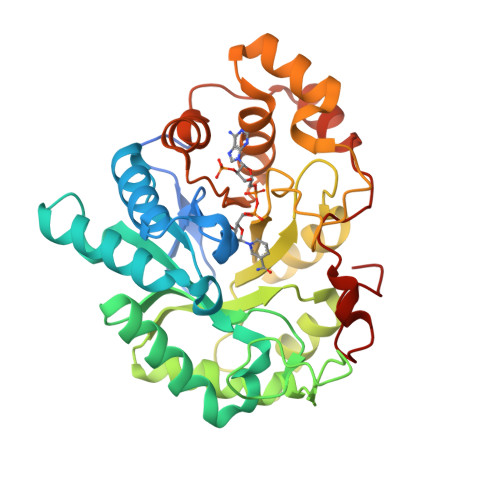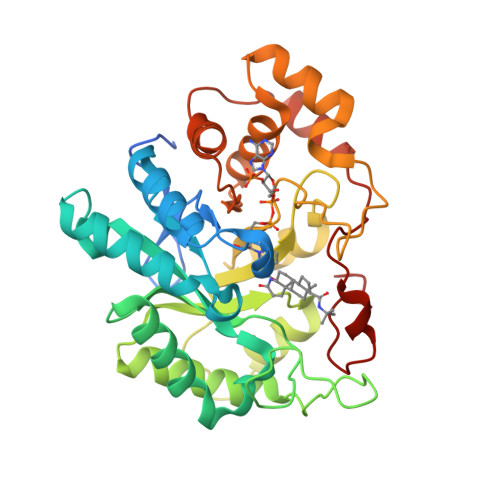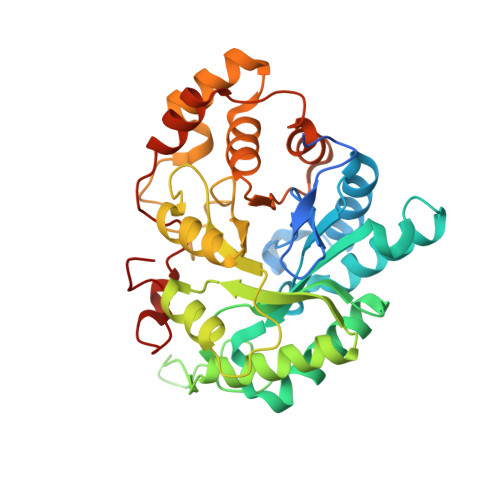Inhibition of human steroid 5beta-reductase (AKR1D1) by finasteride and structure of the enzyme-inhibitor complex.
Drury, J.E., Di Costanzo, L., Penning, T.M., Christianson, D.W.(2009) J Biological Chem 284: 19786-19790
- PubMed: 19515843
- DOI: https://doi.org/10.1074/jbc.C109.016931
- Primary Citation of Related Structures:
3G1R - PubMed Abstract:
The Delta(4)-3-ketosteroid functionality is present in nearly all steroid hormones apart from estrogens. The first step in functionalization of the A-ring is mediated in humans by steroid 5alpha- or 5beta-reductase. Finasteride is a mechanism-based inactivator of 5alpha-reductase type 2 with subnanomolar affinity and is widely used as a therapeutic for the treatment of benign prostatic hyperplasia. It is also used for androgen deprivation in hormone-dependent prostate carcinoma, and it has been examined as a chemopreventive agent in prostate cancer. The effect of finasteride on steroid 5beta-reductase (AKR1D1) has not been previously reported. We show that finasteride competitively inhibits AKR1D1 with low micromolar affinity but does not act as a mechanism-based inactivator. The structure of the AKR1D1.NADP(+)*finasteride complex determined at 1.7 A resolution shows that it is not possible for NADPH to reduce the Delta(1-2)-ene of finasteride because the cofactor and steroid are not proximal to each other. The C3-ketone of finasteride accepts hydrogen bonds from the catalytic residues Tyr-58 and Glu-120 in the active site of AKR1D1, providing an explanation for the competitive inhibition observed. This is the first reported structure of finasteride bound to an enzyme involved in steroid hormone metabolism.
Organizational Affiliation:
Center of Excellence in Environmental Toxicology, University of Pennsylvania School of Medicine, Philadelphia, Pennsylvania 19104-6084, USA.



















